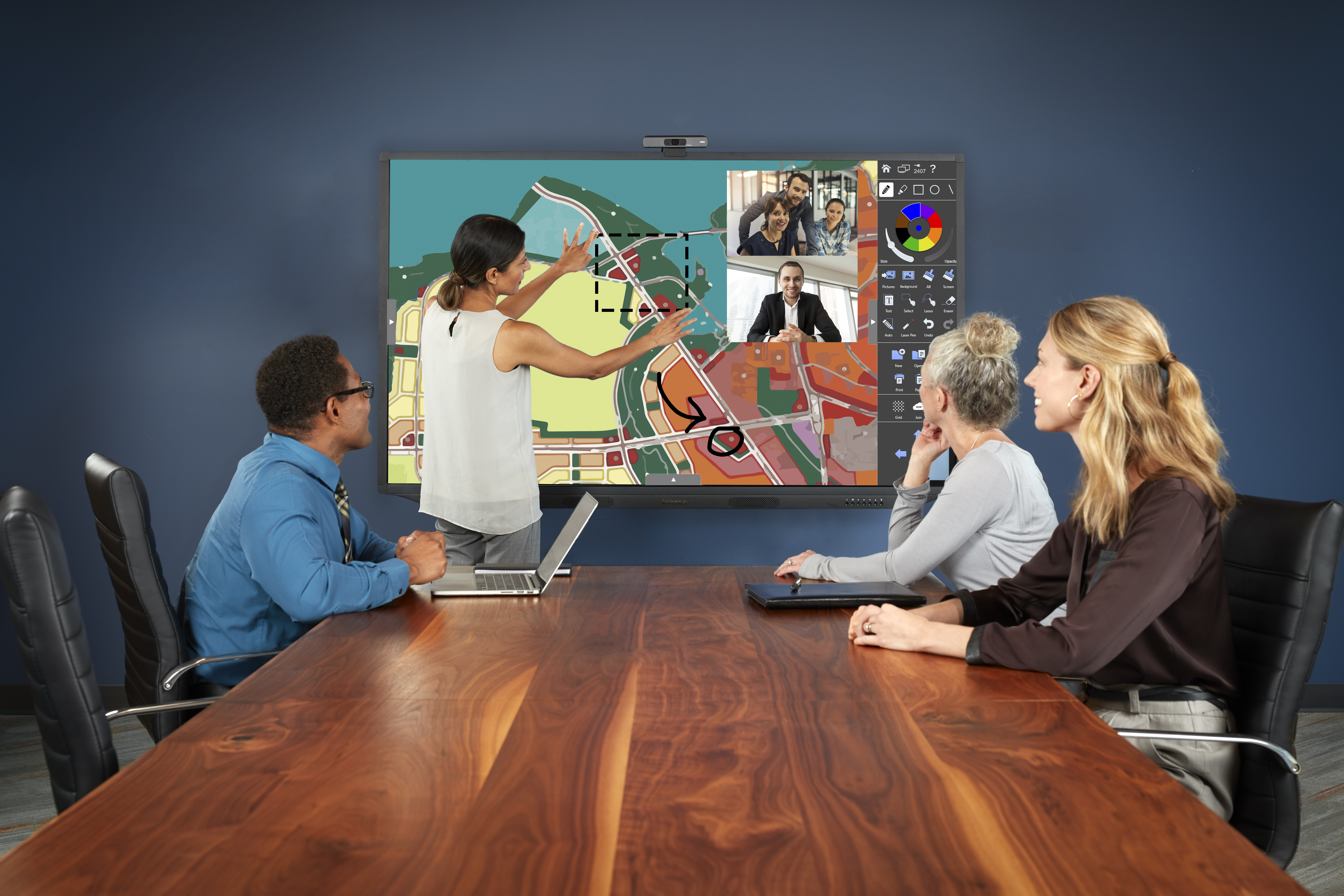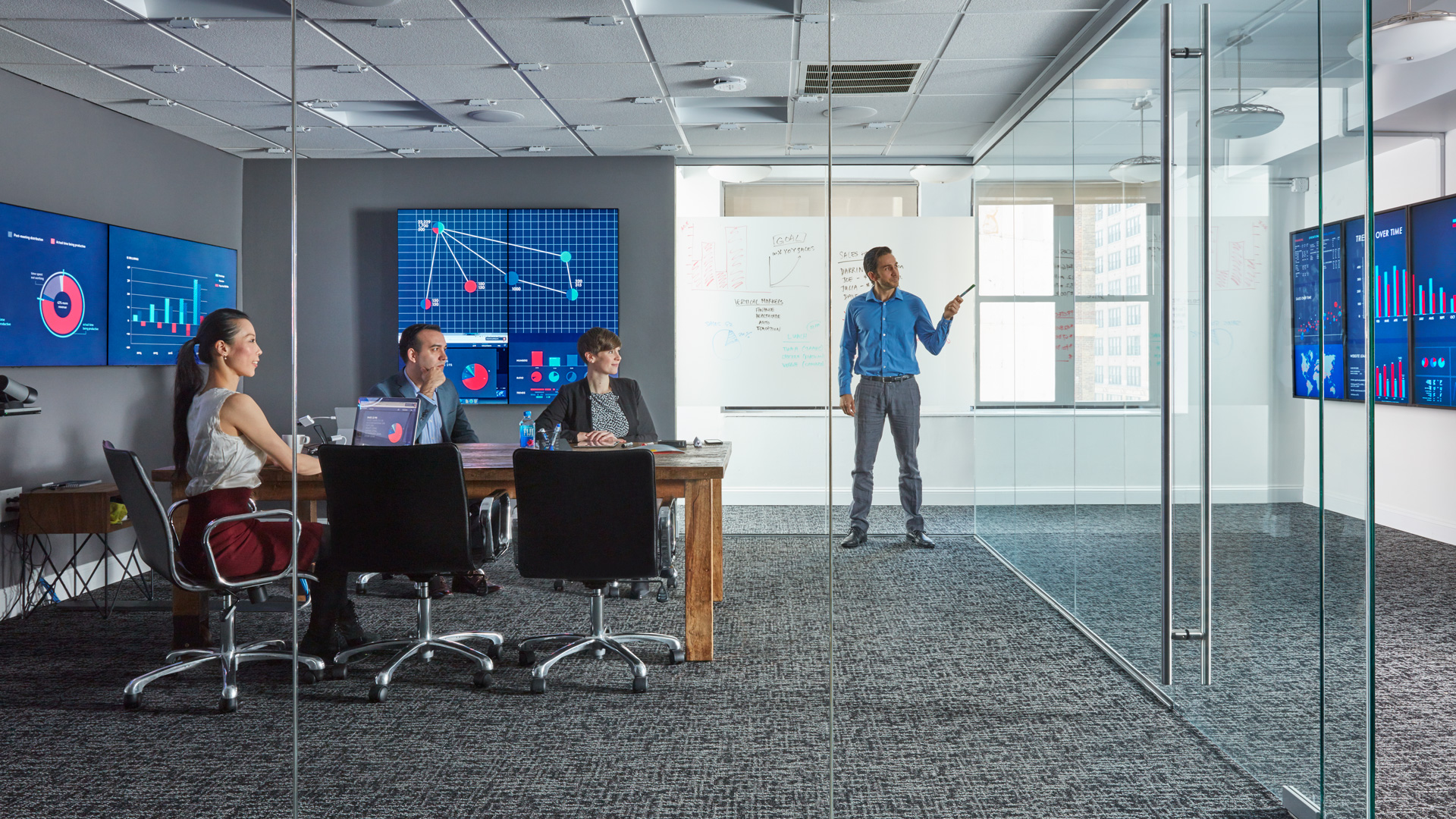Ideating the Bigger Picture

Wait! This is not another article about screen sharing collaboration solutions.
Most of your customers need a collaboration solution, but some will specifically need something more nuanced that can enhance ideation. Step one: understand how teams ideate. Step two: armed with that knowledge, talk with your clients to find out how they work, and show them how you can provide a technology solution that can enhance their ideation process.
Learn more about collaboration from this free webinar: bit.ly/AVcollab
Ideation is creative process where teams get together to brainstorm, sketch, and develop concepts for projects. Depending on the stakeholders involved, some begin to map ideation sessions to a project management methodology such as Waterfall, Six Sigma, Scrum, Agile, or others. Everyone wants to be agile, but, in fact, the term has been widely misused and is specific to a methodology.
If you’ve ever watched the HBO series Silicon Valley, you might have noticed a large white board with a bunch of different colored sticky notes arranged in columns located in the rooms where the developers work. They are likely using the Agile methodology. When they are coming up with pie-in-the-sky ideas, they write an idea on a sticky note and place it on the board. Yada, yada, yada—by the time they’re in development, when someone on the team completes a task, they run up to the board and move the sticky note from one column to another and take a victory lap. There are many steps in between, but you get the idea.
You don’t need to add another certification to your already long list, but having an armchair knowledge will help you speak the language of your customers and provide a technology solution that enhances the process.
Additional Resource: Choosing a Project Management Methodology from CIO Magazine.
A daily selection of the top stories for AV integrators, resellers and consultants. Sign up below.
Evolved Collaboration Solutions
There’s not a technology category for ideation. There are infinite technology solutions sold specifically for project management, but what we’re looking at here is how AV solutions within the collaboration umbrella facilitate ideation and the project management process.
“Organizations are making major bets on design thinking, agile and lean methods to transform their businesses,” said Darren Zwack, VP marketing, Nureva. “Each of these areas has highly collaborative activities at their core that can benefit significantly from a digital makeover.” To be successful, the category needs to support the ability for teams to actively work together, contributing in real-time to a shared space, regardless of their location.
“Content, and engagement are no longer an afterthought,” said Adam Cuzzort, CTO, software, Prysm. There are two primary reasons for this change. “Originally, collaboration tools were siloed: digital whiteboards only worked for in-room collaboration, video teleconferencing (VTC) only worked for remote collaboration, etc.” A critical feature for ideating and project management is that the work can be saved and iterated upon. “These [older] tools were session-based so there was no way to memorialize the work that was done so that participants could pick up exactly where they last left off,” said Cuzzort. “This has changed, thanks to the cloud.”
Ideating engenders a freedom of thought and physical movement. “Mezzanine is intensely spatial—it's absolutely embodied, it is part of the architecture, which is why is possible for pointing to work,” said John Underkoffler, founder and CEO of Oblong Industries. “The screens and the pixels literally know where they are in the room, and they know where you are…at least the part of you that's holding the wand is in the room.”
Many collaboration solutions have evolved and incorporate much more than screen-sharing. The ideation process is not limited to the session or room. “Today we are seeing more tools that offer traditional collaboration benefits like video conferencing and presentation sharing while adding new interactive tools that integrate with messaging platforms, social media, email and mobile apps,” said Loren Shaw, VP marketing, InFocus.
Nuances to Help You Sell the Idea(tion)
You’re already adept at selling technology benefits to your customers, but how do you specifically sell the concept of ideation?
“My best advice would be to have a conversation about what your customer is trying to achieve in building a collaborative or huddle space from a user experience (UX) perspective,” said Mario DiAntonio, TAM and EBC team leader, Samsung Electronics America. The UX for an ideation or project management session is different than a straight-forward collaboration. “A lot of the time, we find that our customers have a huge list of wants, made up of just about every possible usage you can think of—narrow this down to the needs,” he added. “Nine times out of 10, this more purpose-built approach also yields consultants and integrators additional opportunities within the same account.”
As mentioned earlier, reading up on the terminology specific to ideation and project management might go a long way to connecting with your customer. “To effectively sell content-centric collaboration solutions, you need to show them that you know their unique challenges,” said Prysm’s Cuzzort. “Sellers must listen and really get to the heart of what makes that particular customer’s collaboration experiences challenging or ineffective. Shift the conversation from a focus on ROI seen from reducing travel or meeting efficiency to a customized discussion on their unique workflows and the ways in which your offering can align with their needs. For example, if the customer likes to operate in small groups for content creation and ideation, but larger rooms for presentation, they need to offer a suite of tools that can span both environments.”
Look to extract value from your client’s collaborative processes and find meaningful ways to enhance that value. “Clients are looking for ways to do things faster and better and there is a distinct advantage for organizations that have a strong understanding of the methodologies their clients are using,” said Nureva’s Zwack. “It allows them to have a more meaningful conversation about the specific value they can provide in improving the process and outcome of collaborative work.”
Ideating on the Products
Collaboration solutions that also facilitate the ideation process come in all shapes, sizes, and price-points. Knowing how an organization will utilize certain feature sets and how important ideation is to its overall goals will help you suggest a product.






Cindy Davis is the brand and content director of AV Technology (AVT). She was a critical member of the AVT editorial team when the title won the “Best Media Brand” laurel in the 2018 SIIA Jesse H. Neal Awards. Davis moderates several monthly AV/IT roundtables and enjoys facilitating and engaging in deeper conversations about the complex topics shaping the ever-evolving AV/IT industry. She explores the ethos of collaboration, hybrid workplaces, experiential spaces, and artificial intelligence to share with readers. Previously, she developed the TechDecisions brand of content sites for EH Publishing, named one of the “10 Great Business Media Websites” by B2B Media Business magazine. For more than 25 years, Davis has developed and delivered multiplatform content for AV/IT B2B and consumer electronics B2C publications, associations, and companies. A lifelong New Englander, Davis makes time for coastal hikes with her husband, Gary, and their Vizsla rescue, Dixie, sailing on one of Gloucester’s great schooners and sampling local IPAs. Connect with her on LinkedIn.
